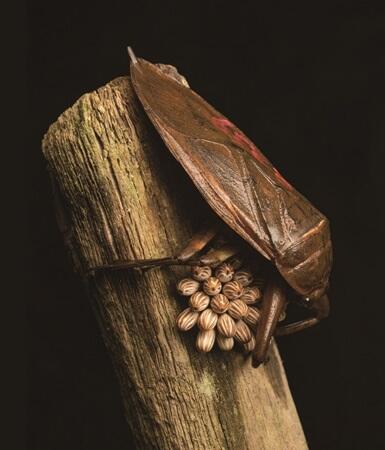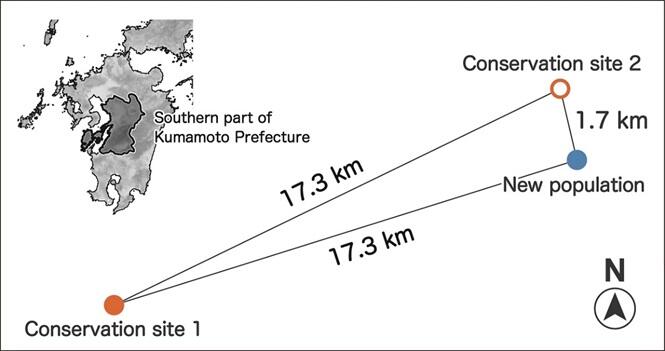A research group led by Associate Professor Shin-ya Ohba of the Institute of Humanities and Social Sciences at Nagasaki University, Assistant Professor Tomoya Suzuki of the Faculty of Human Environmental Studies at Hiroshima Shudo University, along with Academic Researcher Hidetaka Ichiyanagi of the Prefectural University of Kumamoto, announced the discovery of a new natural population of giant water bug, which was designated as specified class II nationally rare species of wild fauna and flora in the southern region of Kumamoto Prefecture. The DNA of this population was compared to that of a population in an area that had been monitored through conservation activities, and it was found to be an independent population. The exact location of the habitat has not been disclosed for conservation purposes. The findings are expected to provide important insights into the conservation of this endangered giant water bug in Kyushu. The result was published in Entomological Science, an international journal of the Entomological Society of Japan.

Provided by Nagasaki University
The Japanese archipelago is globally recognized for its high biodiversity; however, this diversity is currently being depleted. The Ministry of the Environment has been promoting the designation of "specified class II nationally rare species of wild fauna and flora." In line with this designation, the sale and transfer of such species is prohibited under regulations based on the Act on Conservation of Endangered Species of Wild Fauna and Flora since 2020.
In the Kyushu region in particular, the habitat and population of the giant water bug has decreased significantly, with only small, isolated, and scattered groups remaining. The research group has been conducting conservation activities for giant water bugs in the southern region of the Kumamoto Prefecture. To stably maintain the only confirmed population in the area, Ichiyanagi has been working on improving the habitat environment and creating a new population by transplanting individuals from one conservation area (conservation site 1) to a new one (conservation site 2) located 17.3 km away.
During this activity, a new population was confirmed to inhabit a location 1.7 km away from conservation site 2. However, the origin of the newly discovered individuals has remained unknown.

Provided by Nagasaki University
Therefore, in this study, the research group aimed to clarify the origin of these giant water bugs by comparing the DNA of the species from each population. This study used next-generation sequencing to detect DNA polymorphisms scattered across wide regions of the genome. Genetic relationships were examined based on this information. The results indicated that the newly discovered population was likely a natural population that has survived unnoticed, independent of the traditional conservation sites 1 and 2.
Since the giant water bug is a rare species, the method for acquiring DNA involved collecting tissue approximately 2 mm from the tip of the middle leg and then returning the individual alive to its original habitat. It was also confirmed that DNA polymorphism data at approximately 60,000 locations could be obtained while minimizing damage to individuals.
In the future, the research group intends to continue DNA analysis to clarify gene flow among populations in Japan by including samples of giant water bug populations from a wide area of the Japanese archipelago.
Journal Information
Publication: Entomological Science
Title: Discovery of a new population of the endangered giant water bug Kirkaldyia deyrolli (Heteroptera: Belostomatidae) in Kyushu and evaluation of their genetic structure
DOI: 10.1111/ens.12564
This article has been translated by JST with permission from The Science News Ltd. (https://sci-news.co.jp/). Unauthorized reproduction of the article and photographs is prohibited.




